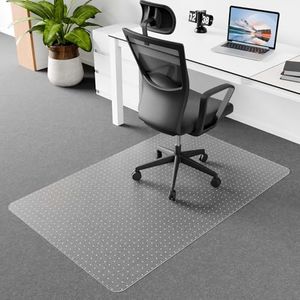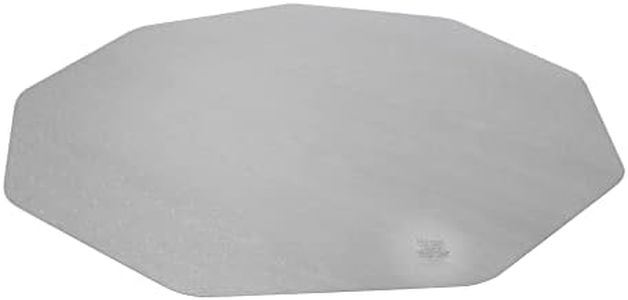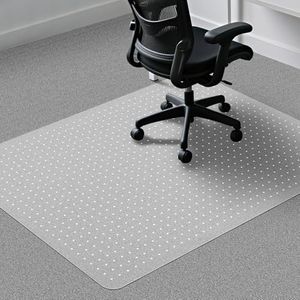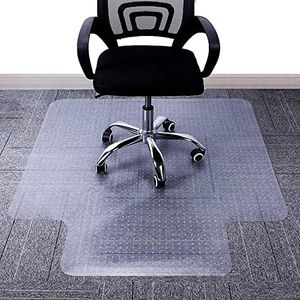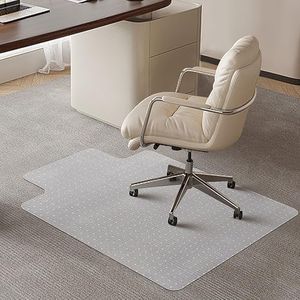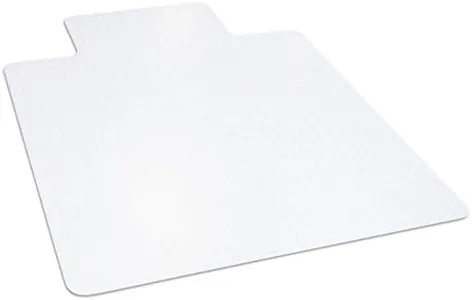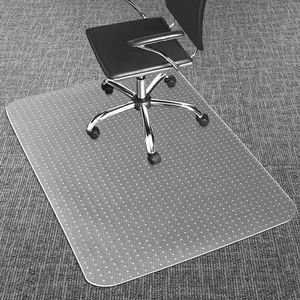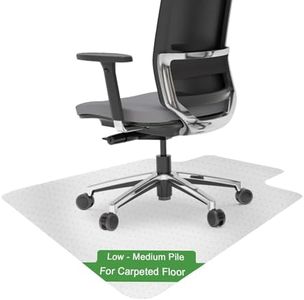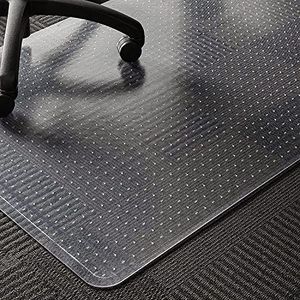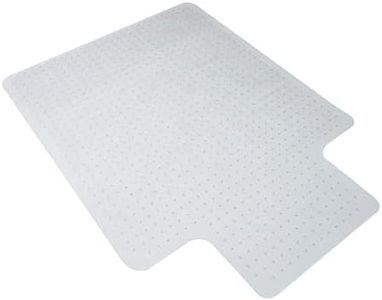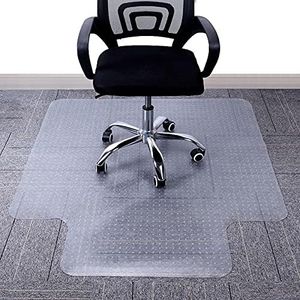We Use CookiesWe use cookies to enhance the security, performance,
functionality and for analytical and promotional activities. By continuing to browse this site you
are agreeing to our privacy policy
10 Best Chair Mats For Carpeted Floors
From leading brands and best sellers available on the web.By clicking on a link to a third party's website, log data is shared with that third party.
Buying Guide for the Best Chair Mats For Carpeted Floors
Choosing the right chair mat for carpeted floors can make a big difference in both protecting your carpet and making it easier to move your chair. With so many options available, it's important to consider how the mat will interact with your carpet, how much use it will get, and what kind of chair you'll be using. Finding the right features means focusing on durability, fit, and function so that your workspace stays comfortable and your flooring stays protected.MaterialThe material of a chair mat affects how well it protects your carpet and how easily your chair can glide. Most mats are made from polycarbonate, PVC, or tempered glass. Polycarbonate is sturdy, stable, and crack-resistant, making it great for frequent use. PVC is more flexible and budget-friendly but may not last as long under heavy rolling. Tempered glass is extremely durable and doesn't dent but is heavier and can be more difficult to move. When choosing material, think about how often you'll use your chair and how heavy you or your chair are—a more durable material is better for high use, while lighter options may be fine for occasional use.
ThicknessThickness is how dense and solid the mat feels under your chair, which affects its ability to protect your carpet and prevent dents. Thinner mats (under 1/8 inch) work best for low-pile carpets with little cushioning. Medium thickness (1/8–1/4 inch) is ideal for medium-pile carpets, while very thick mats (over 1/4 inch) are needed for high-pile or plush carpets. To pick the right one, check the height of your carpet: the deeper or shaggier it is, the thicker your mat should be so it doesn’t sink in and become hard to roll on.
Stud/Grip PatternChair mats for carpeted floors usually have small studs or grips on the underside to keep them from sliding around. The length and density of these studs are designed to match the carpet pile. Short, less-aggressive studs are suited for low-pile carpets, while deep or sharp studs are better for high-pile or plush carpets for better grip. If the mat slides too much, it likely doesn’t have enough grip for your carpet type. Make sure you match the stud pattern to your carpet for a stable, safe mat.
Size and ShapeChoosing the right size and shape ensures you have enough area for your chair movement without taking up unnecessary space. Mats come in various sizes and shapes, from rectangles to lips (an extension that fits under a desk). Consider how much you move your chair and what your workspace layout is like. If you roll around a lot or have a large desk, a bigger mat is better. For smaller spaces or limited movement, a compact mat may be all you need.
Edge DesignThe edge design of a chair mat affects both safety and ease of use. Mats with a beveled or ramped edge are easier to roll onto from the carpet and are safer because they reduce tripping. Flat or sharp-edged mats may cause your chair wheels or feet to get stuck, making moving onto the mat more difficult. If you’re concerned about tripping or need a smooth transition, look for mats with gently sloping edges.
TransparencySome people want the chair mat to blend in with their carpet, especially in home offices or shared spaces. Transparent or clear mats let your carpet’s color show through and help the mat look less noticeable. Opaque mats are more visible and may stand out in the room. If aesthetics matter to you, consider a transparent option for a subtler look.

